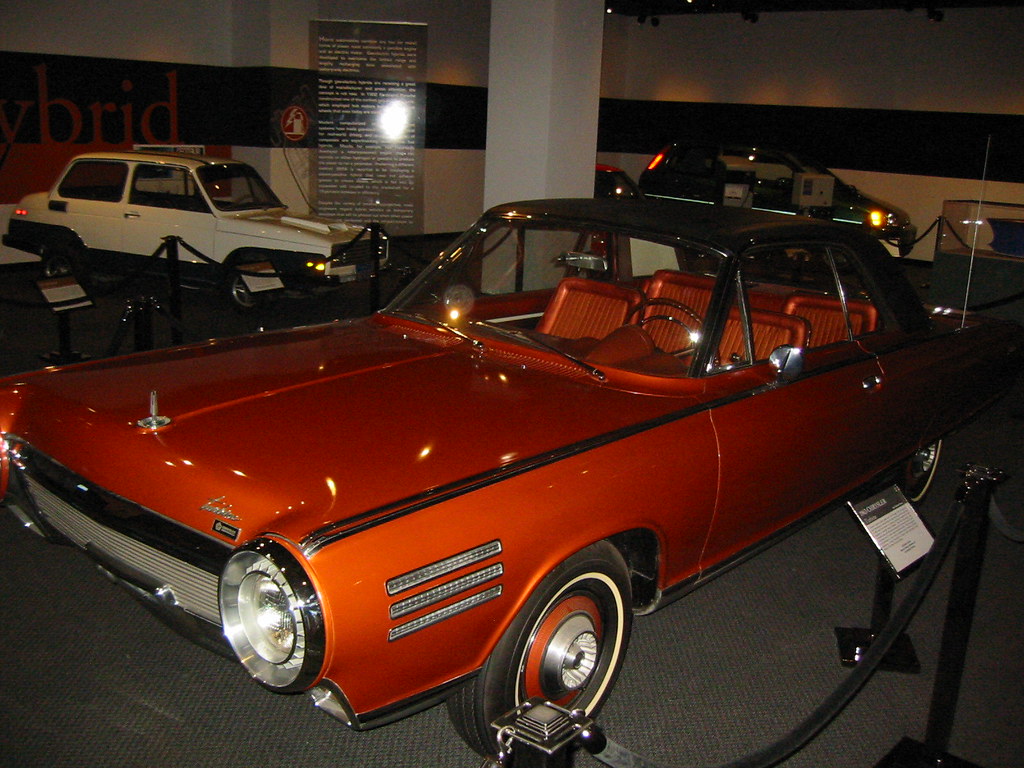Europe, often considered a cradle of Western civilization, stands as a continent of profound historical depth, geographical diversity, and enduring global influence. Far more than just a landmass, it represents a complex tapestry woven from centuries of human endeavor, cultural exchange, and evolving geopolitical landscapes. Understanding Europe requires a comprehensive look at the fundamental elements that define its very being, from its physical boundaries to the earliest stirrings of human life within its territories.
This in-depth analysis will navigate through some of the most critical aspects that have shaped Europe into the continent we recognize today. We will delve into its defining characteristics, tracing its story through factual data and significant historical milestones. Our aim is to provide clear, data-driven insights, offering a foundational understanding of this remarkable continent.
In this initial section, we lay the groundwork by exploring Europe’s inherent geographical identity and its crucial demographic and economic statistics. We will also uncover the fascinating etymological roots of its name, shed light on the unique climatic factors that have tempered its development, and journey back through the millennia to understand its rich prehistoric origins.

1. **Europe’s Fundamental Geographical Identity**Europe’s geographical identity is a cornerstone of its continental status, marking it as a distinct and historically significant region. Positioned entirely within the Northern Hemisphere and predominantly in the Eastern Hemisphere, it is strategically bordered by major bodies of water that have played a vital role in its development. To its north lies the Arctic Ocean, while the vast Atlantic Ocean defines its western frontier. The Mediterranean Sea forms its southern boundary, and to the east, it shares a substantial landmass with Asia.
This intimate connection with Asia means that Europe is fundamentally a part of the larger Eurasian landmass, and by extension, Afro-Eurasia. The traditional separation from Asia is commonly delineated by natural features such as the watershed of the Ural Mountains, the Ural River, the Caspian Sea, the Greater Caucasus range, the Black Sea, and the Turkish straits. These geographical markers have historically shaped both physical and cultural divides, creating a unique continental identity that has been debated and refined over centuries.
In terms of sheer scale, Europe is the second-smallest continent, covering approximately 10,186,000 square kilometres (3,933,000 sq mi). This accounts for about 2% of Earth’s total surface area, or 6.8% of Earth’s land area, when employing the widely accepted seven-continent model. Despite its relatively modest size, Europe is a mosaic of political entities, divided into around fifty sovereign states.
Among these, Russia stands out as both the largest and most populous nation, spanning an impressive 39% of the continent’s total area and home to 15% of its population. This geographic distribution underscores the diverse landscapes and political structures that characterize the European continent, making its fundamental geographical identity a complex interplay of physical boundaries and human-defined territories.
Read more about: Chisinau: Unveiling the Enduring Spirit of Moldova’s Verdant Capital
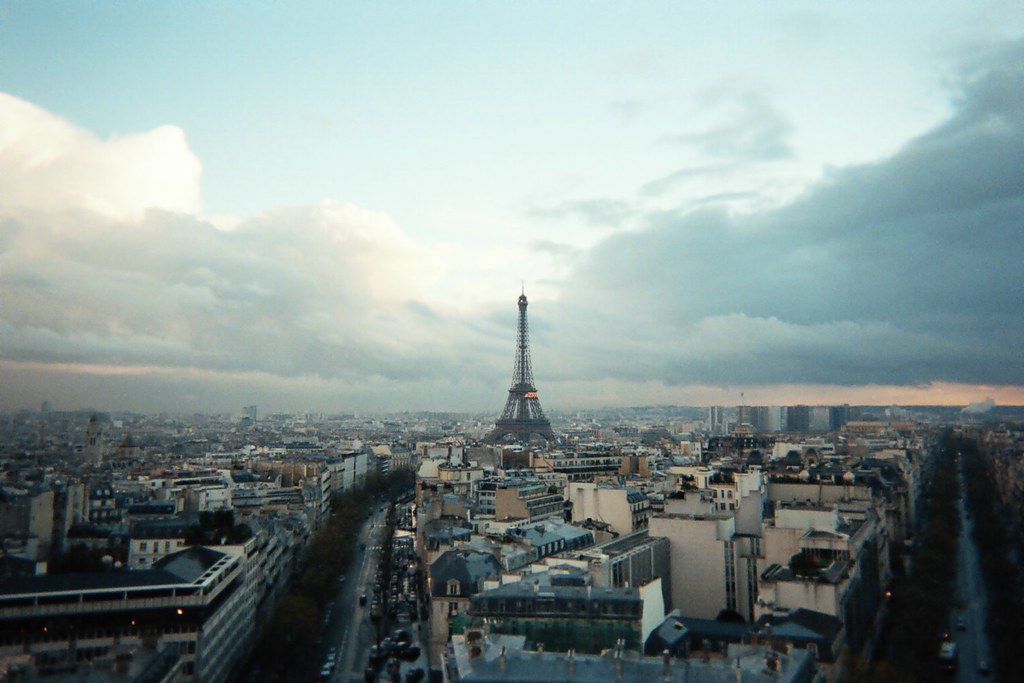
2. **Key Demographic and Economic Overview**Beyond its geographical contours, Europe presents a compelling profile of demographic and economic strength that positions it as a significant global player. With a total population of approximately 745 million in 2021, Europe accounts for about 10% of the world population, making it the third-largest continent by population after Asia and Africa. This substantial population is distributed across its diverse nations, contributing to a rich tapestry of cultures and societies.
The continent exhibits a notable population density, recorded at 72.9 inhabitants per square kilometer (188 per square mile), which places it as the second-most densely populated continent globally. This concentration of people has facilitated extensive urbanization and the development of major urban centers, which serve as hubs of innovation, trade, and cultural exchange. Key urban areas like Moscow, Istanbul, Paris, London, and Madrid exemplify this density and vitality.
Economically, Europe commands a powerful presence on the world stage. Its projected GDP (PPP) for 2025 is an estimated $43.53 trillion, securing its position as the second-largest globally. In terms of nominal GDP, Europe is projected to reach $28.22 trillion in 2025, ranking it third worldwide. These figures underscore the robust economic output and purchasing power generated across the continent.
Furthermore, Europe’s GDP per capita, estimated at $38,270 for 2025, ranks it third globally, indicating a high level of economic prosperity and development among its inhabitants. The European Union (EU) itself is a major economic engine, representing the majority of Europe and boasting an economy that is the second-largest in the world by nominal GDP and the third-largest by PPP-adjusted GDP. This collective economic strength highlights Europe’s enduring influence in global finance and trade, driven by a highly productive workforce and advanced economic systems.
Read more about: Midway City: 14 Critical Insights into an Unincorporated Community’s Defining Features and Persistent Struggles
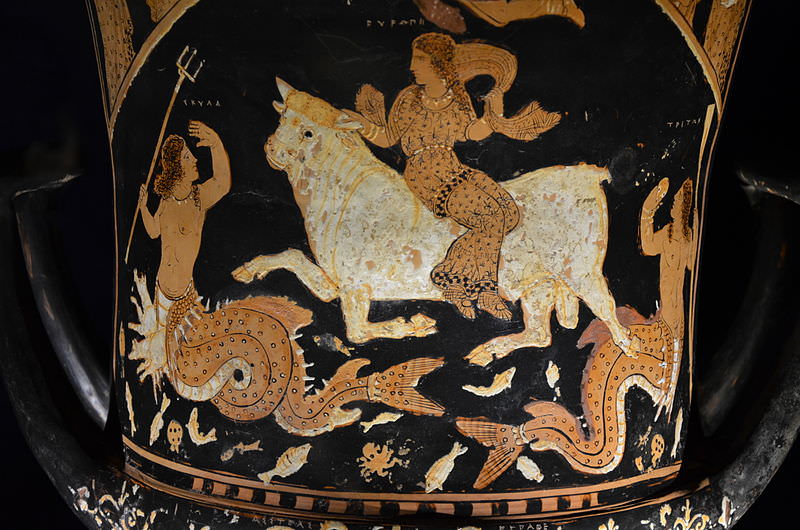
3. **The Etymological Journey of “Europa”**The name “Europe” carries a rich historical and mythological legacy, with its roots deeply embedded in classical Greek tradition. The earliest recorded usage of Eurṓpē as a geographical term appears in the Homeric Hymn to Delian Apollo, referring specifically to the western shore of the Aegean Sea. However, its broader application as a name for a significant part of the known world emerged in the 6th century BCE through the works of early cartographers and philosophers like Anaximander and Hecataeus.
In classical Greek mythology, Europa (Ancient Greek: Εὐρώπη, Eurṓpē) was famously a Phoenician princess, a figure whose legend has transcended millennia. Linguistically, one prominent view suggests her name is a compound of Ancient Greek elements: εὐρύς (eurús), meaning ‘wide’ or ‘broad’, and ὤψ (ōps, gen. ὠπός, ōpós), referring to ‘eye’, ‘face’, or ‘countenance’. This etymology would render Eurṓpē as ‘wide-gazing’ or ‘broad of aspect’, an evocative description perhaps linked to the vastness of the land. This interpretation is further supported by the historical context where ‘broad’ was an epithet often associated with Earth itself in reconstructed Proto-Indo-European religious poetry.
However, the linguistic journey of “Europa” is not without scholarly debate. An alternative perspective, championed by Robert Beekes, posits a pre-Indo-European origin for the name, suggesting that a derivation purely from ‘eurus’ might yield a different toponym. Beekes has identified related place names, such as Europos in ancient Macedonia, within ancient Greek territory, supporting his theory of a more indigenous, ancient origin for the term within the region itself.
Attempts to link Eurṓpē to Semitic terms for ‘west’—such as Akkadian ‘erebu’ (‘to go down, set,’ in reference to the sun) or Phoenician ‘ereb’ (‘evening, west’), which are at the root of Arabic ‘maghreb’ and Hebrew ‘ma’arav’—have largely been dismissed. Scholars like Martin Litchfield West and Robert Beekes have noted the poor phonological match, deeming a connection to Semitic languages improbable. Regardless of its precise linguistic genesis, the name derived from Eurṓpē or Europa has achieved widespread international recognition, with most major world languages, including Chinese (Ōuzhōu) and Japanese (Ōshū Rengō), adopting variations of the term to refer to this influential continent.
Read more about: Davao City Unveiled: 12 Deep Dives into Mindanao’s Most Dynamic Metropolis
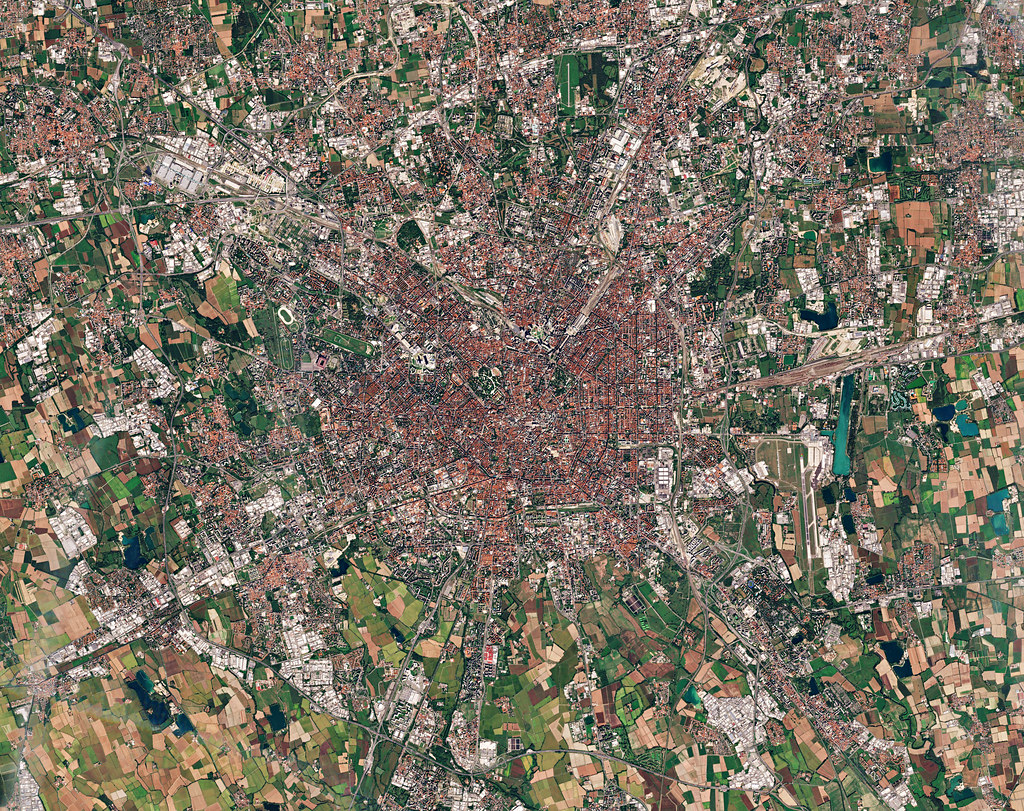
4. **Europe’s Climate: A Temperate Influence**Europe’s climate is a significant factor in its historical development and current environmental characteristics, largely defined by the tempering effects of Atlantic currents. The most influential of these is the Gulf Stream, a powerful and warm oceanic current that transports tropical waters northward. This natural phenomenon acts as a massive thermal regulator, profoundly shaping the weather patterns across much of the continent.
This influx of warm Atlantic water results in a predominantly temperate climate across a vast portion of Europe. The most noticeable effect is the moderation of seasonal extremes, leading to milder winters and more agreeable summers compared to other landmasses at similar latitudes. This temperate environment has historically provided fertile grounds for agriculture, supporting dense populations and facilitating early human settlement and civilization. The stability offered by such a climate was a crucial advantage for the emergence of complex societies.
However, Europe’s climate is not uniformly temperate. As one moves further inland, away from the direct influence of the Atlantic Ocean, seasonal differences become markedly more pronounced. This geographical shift leads to the development of more continental climates, characterized by colder winters and hotter summers. Regions in Eastern Europe, for instance, experience greater fluctuations in temperature between seasons compared to the mild, oceanic climates of the western coastal areas.
Understanding these climatic variations is key to appreciating Europe’s diverse ecosystems and agricultural practices. The Gulf Stream’s profound impact on much of the continent has fostered conditions conducive to sustained human activity and robust natural environments. This fundamental climatic characteristic has, over millennia, played a quiet yet critical role in shaping Europe’s economic productivity, demographic distribution, and overall historical trajectory, a subtle yet powerful underlying trend in its development.
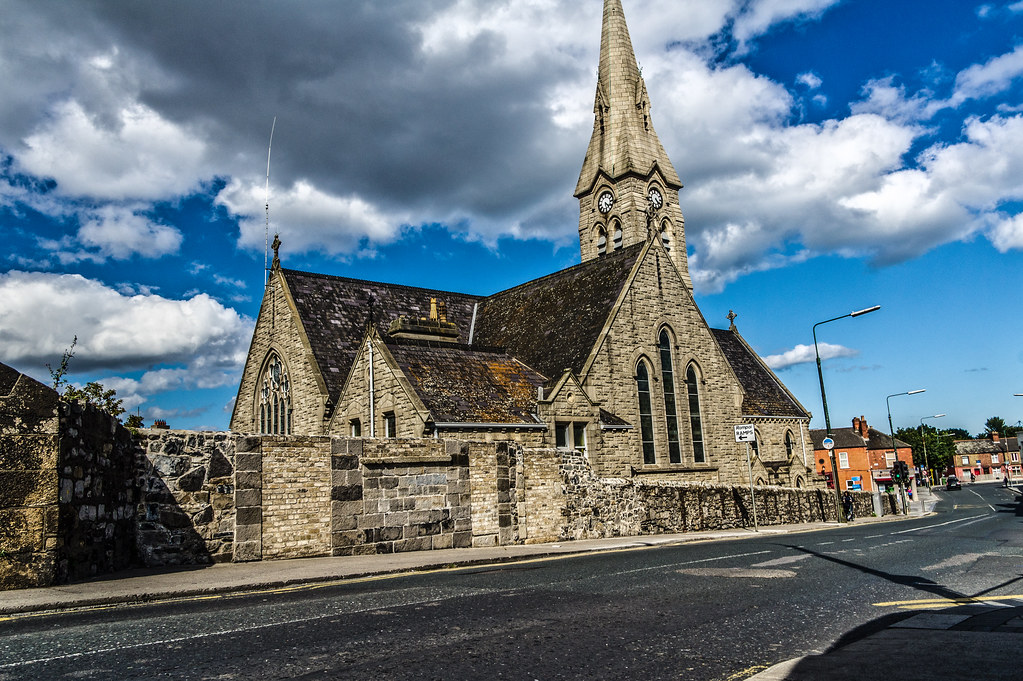
5. **Unveiling Prehistoric Europe**Europe’s deep history stretches back through millions of years, marked by dramatic environmental shifts and the successive waves of hominin populations that inhabited its landscapes. The Pleistocene epoch, spanning 2.5 million years, was characterized by numerous cold phases known as glacials, or significant advances of continental ice sheets, occurring at intervals of approximately 40,000 to 100,000 years. These long glacial periods were punctuated by warmer, shorter interglacials, typically lasting 10,000–15,000 years. Earth is currently in the Holocene, an interglacial period that began about 10,000 years ago, following the last major cold episode.
The earliest evidence of hominin presence in Europe dates back to roughly 1.8 million years ago with Homo erectus georgicus, discovered in Georgia. Further west, other hominin remains, approximately 1 million years old, have been unearthed in Atapuerca, Spain, painting a picture of early dispersal across the continent. Neanderthal man, named after the Neandertal valley in Germany, emerged in Europe around 150,000 years ago, with their presence confirmed in modern-day Poland as early as 115,000 years ago. These robust early human relatives eventually vanished from the fossil record about 40,000 years ago, with their final refuge thought to be the Iberian Peninsula.
Modern humans, or Cro-Magnons, subsequently arrived in Europe, initially believed to have appeared around 43,000 to 40,000 years ago. However, more recent evidence suggests an even earlier arrival, potentially around 54,000 years ago, pushing back the timeline for Homo sapiens’ presence on the continent. The earliest confirmed sites for these modern humans in Europe, dating back 48,000 years, include Riparo Mochi in Italy, Geissenklösterle in Germany, and Isturitz in France, showcasing the widespread early distribution of our ancestors.
The European Neolithic period marked a profound transformation, beginning around 7000 BCE in Greece and the Balkans, likely influenced by farming practices in Anatolia and the Near East. This era saw the widespread cultivation of crops, the raising of livestock, an increase in settled communities, and the adoption of pottery. This agricultural revolution disseminated along the Danube and Rhine valleys (the Linear Pottery culture) and the Mediterranean coast (the Cardial culture). Between 4500 and 3000 BCE, these central European Neolithic cultures expanded, introducing copper artifact production.
Western Europe during the Neolithic was characterized not just by agricultural settlements, but notably by monumental field structures, including causewayed enclosures, burial mounds, and megalithic tombs. The subsequent Chalcolithic period saw the flourishing of the Corded Ware cultural horizon and the construction of immense megalithic monuments like the Megalithic Temples of Malta and Stonehenge across Western and Southern Europe. The genetic legacy of these periods is evident in modern European populations, who largely descend from three distinct lineages: Mesolithic hunter-gatherers, Neolithic Early European Farmers from Anatolia, and Yamnaya Steppe herders from the Pontic–Caspian steppe, reflecting millennia of migration and intermingling that formed the demographic basis of the continent. The European Bronze Age commenced around 3200 BCE in Greece with the Minoan civilization on Crete, followed by the Mycenaeans, whose collapse around 1200 BCE ushered in the European Iron Age, setting the stage for the emergence of early Mediterranean cities through Greek and Phoenician colonization.” , “_words_section1”: “1940
Having established Europe’s geographical, demographic, etymological, climatic, and prehistoric foundations, we now pivot to its profound historical and definitional evolution. This section will navigate the pivotal classical and medieval eras that forged much of Europe’s cultural identity, trace the shifting interpretations of its geographical borders over centuries, and finally, examine the remarkable impact of modern European integration, particularly through the lens of the European Union. These elements collectively paint a picture of a continent in constant flux, defined as much by its enduring heritage as by its continuous redefinition.
Read more about: Global Population Dynamics Unveiled: An In-Depth Look at Historical Trends, Current Figures, and Future Projections

6. **Classical Antiquity: The Bedrock of Western Civilization**The narrative of Europe’s historical evolution undeniably begins with Classical Antiquity, a period dominated by the towering civilizations of Ancient Greece and Ancient Rome. Ancient Greece is widely regarded as the founding culture of Western civilization, leaving an indelible mark on democratic and rationalist thought. Its political innovations, such as Cleisthenes instituting the world’s first democratic system of government in Athens in 508 BCE, continue to resonate, with Greek political ideals being rediscovered by European philosophers in the late 18th century.
Beyond politics, Greece’s cultural contributions were monumental. Luminaries like Aristotle, Socrates, and Plato shaped philosophy with humanism and rationalism. Historians like Herodotus and Thucydides pioneered historical writing, while epic poets such as Homer laid the groundwork for narrative verse. In drama, Sophocles and Euripides created enduring works, and medical science advanced under Hippocrates and Galen, alongside scientific breakthroughs from Pythagoras, Euclid, and Archimedes. The Greco-Persian Wars of the 5th century BCE were a pivotal moment, and the subsequent “Golden Age of Athens” laid many foundations for Western civilization.
Following Greece, Rome emerged as a successor, embedding its influence deeply into law, politics, language, engineering, architecture, and government across Western civilization. Beginning its expansion from central Italy in the third century BCE, Rome eventually dominated the entire Mediterranean basin and Western Europe. The Roman Republic transitioned into the Roman Empire in 27 BCE under Augustus, ushering in the “Pax Romana,” a period of two centuries marked by unprecedented peace, prosperity, and political stability across much of Europe.
The empire continued its expansion under emperors such as Antoninus Pius and Marcus Aurelius. Christianity, initially persecuted, was legalized by Constantine I in 313 CE, and the capital was moved to Constantinople in 330 CE. By 380 CE, Christianity became the sole official religion, and pagan religions were outlawed between 391-392 CE. The end of antiquity is variously marked by the fall of the Western Roman Empire in 476 CE, the closure of the Platonic Academy of Athens in 529 CE, or the rise of Islam in the early 7th century CE. Throughout much of its existence, the Byzantine Empire, the Eastern Roman successor, remained a powerful economic, cultural, and military force in Europe.
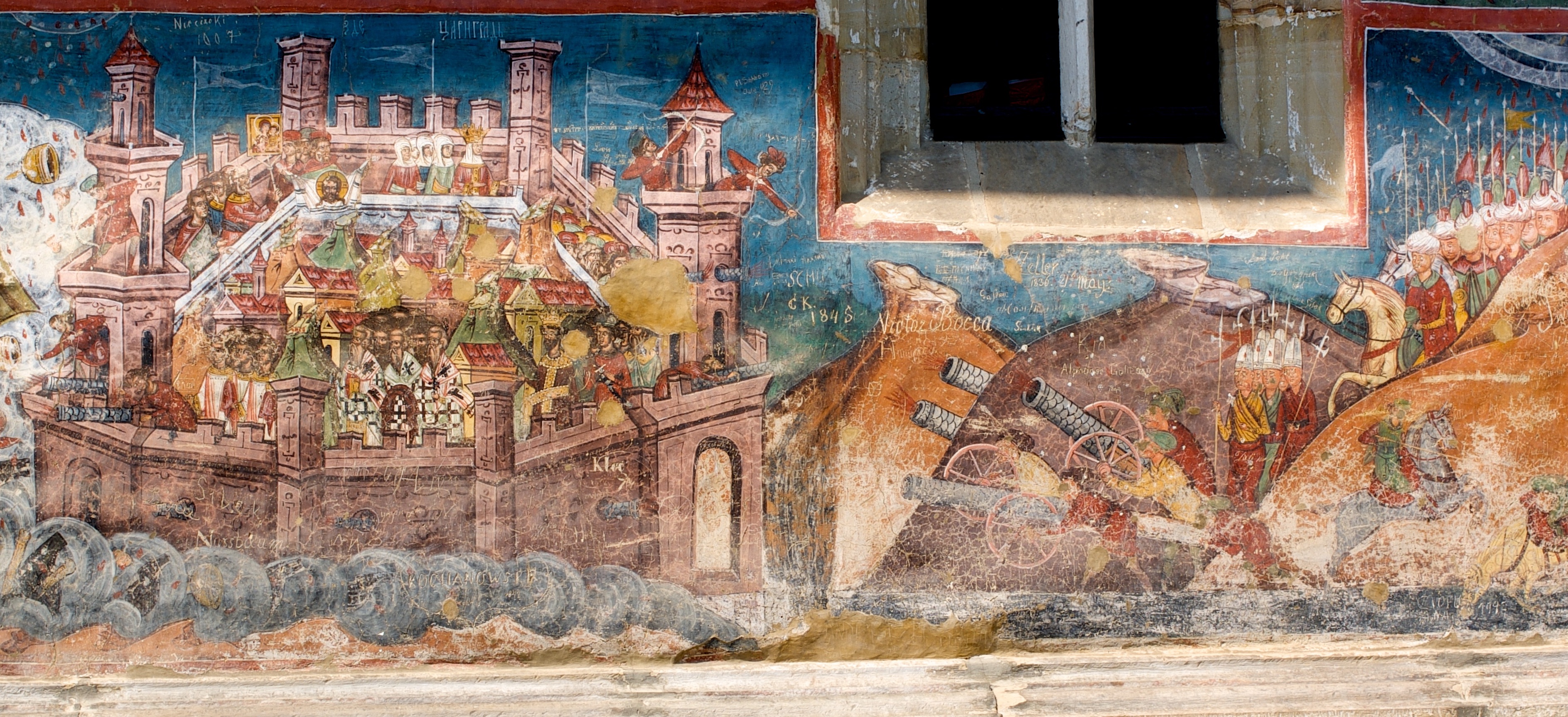
7. **The Early Middle Ages: Fragmentation and New Beginnings**With the decline of the Western Roman Empire, Europe entered a transformative period that historians often refer to as the “Age of Migrations.” This era saw numerous invasions and extensive movements of peoples, including the Ostrogoths, Visigoths, Goths, Vandals, Huns, Franks, Angles, Saxons, Slavs, Avars, Bulgars, Vikings, Pechenegs, Cumans, and Magyars. Renaissance thinkers like Petrarch would later pejoratively label this time the “Dark Ages,” reflecting a perceived decline in learning and cultural output in Western Europe.
During this period, much of the literature, philosophy, and scientific thought from the classical era disappeared from Western Europe, though isolated monastic communities became crucial bastions, safeguarding and compiling previously accumulated written knowledge. Meanwhile, the Eastern Roman Empire, known as the Byzantine Empire, maintained strong Roman traditions and state structures, predominantly in the Greek-speaking world. For much of its existence, the Byzantine Empire remained Europe’s most powerful economic, cultural, and military entity, notably under Emperor Justinian I, who established a legal code foundational to many modern systems, funded the Hagia Sophia’s construction, and asserted state control over the Christian church.
From the 7th century onwards, the protracted Byzantine–Sasanian wars left both the Byzantines and neighboring Sasanid Persians severely weakened. This vulnerability allowed Muslim Arabs to make significant inroads into historically Roman territories, conquering the Levant and North Africa, and extending into Asia Minor and the Caucasus region. Over subsequent centuries, Muslim forces further expanded their reach to Cyprus, Malta, Crete, Sicily, and parts of southern Italy. Between 711 and 720, most of the Visigothic Kingdom of Iberia came under Muslim rule, becoming Al-Andalus within the expanding Umayyad Caliphate.
The Umayyad dynasty’s prestige was dampened by the unsuccessful second siege of Constantinople in 717 and their eventual defeat by the Frankish leader Charles Martel at the Battle of Poitiers in 732, which effectively halted their northward advance into Western Europe. In the remote northwestern Iberia and the central Pyrenees, the foundations of Christian kingdoms like Asturias, Leon, and Galicia were laid, marking the start of the Reconquista, a centuries-long effort to reclaim the peninsula from Muslim rule. Concurrently, Germanic and Slavic tribes established new domains across Western and Eastern Europe. The Frankish tribes united under Clovis I, and Charlemagne, a Frankish king of the Carolingian dynasty, conquered much of Western Europe and was anointed “Holy Roman Emperor” in 800 CE, leading to the founding of the Holy Roman Empire in 962, primarily centered in the German principalities of central Europe.
East Central Europe saw the creation of the first Slavic states and the adoption of Christianity around 1000 CE, with the powerful West Slavic state of Great Moravia expanding south to the Balkans. Further south, the First Bulgarian Empire, the Serbian Principality, and the Duchy of Croatia emerged and adopted Christianity. To the east, Kievan Rus’, based in Kiev, grew to be the largest state in Europe by the 10th century, adopting Orthodox Christianity in 988. Volga Bulgaria, an Islamic state in the 10th century, was eventually absorbed into Russia, showcasing the diverse religious and political landscape of early medieval Europe.

8. **High and Late Middle Ages: Expansion, Conflict, and Transformation**The period spanning from 1000 to 1250 CE, known as the High Middle Ages, witnessed significant population growth across Europe, culminating in the intellectual and cultural flourishing of the 12th-century Renaissance. This era of economic expansion, coupled with a lack of safety on overland trading routes, stimulated the development of major commercial networks along the coasts of the Mediterranean and Baltic Seas. The burgeoning wealth and independence of several coastal cities empowered the Maritime Republics, such as Venice and Genoa, to play a leading role on the European stage, reestablishing vital contacts between Europe, Asia, and Africa through extensive trade networks and colonies.
On the European mainland, the societal structure was largely dominated by the nobility and the clergy. Feudalism, which originated in France during the Early Middle Ages, swiftly spread across the continent, defining socio-political relationships. In England, a prolonged struggle for influence between the nobility and the monarchy ultimately led to the historic writing of the Magna Carta and the establishment of a parliament, laying groundwork for representative governance. Throughout this period, the Roman Catholic Church served as the primary wellspring of culture, responsible for education through its monasteries and cathedral schools across much of Europe.
The Papacy reached the zenith of its power during the High Middle Ages, though this period also saw the profound East-West Schism in 1054, which religiously divided the former Roman Empire into the Eastern Orthodox Church in Byzantium and the Roman Catholic Church in the West. In a dramatic call to arms, Pope Urban II initiated the Crusades in 1095, urging Christian forces to reclaim Jerusalem and the Holy Land from Muslim occupation. Within Europe itself, the Church also organized the Inquisition to combat heresy. Concurrently, on the Iberian Peninsula, the centuries-long Reconquista culminated in the fall of Granada in 1492, marking the end of over seven centuries of Islamic rule in the southwestern part of the peninsula.
In the eastern reaches of the continent, a resurgent Byzantine Empire managed to recapture Crete and Cyprus from Muslim control and reconquer parts of the Balkans. Constantinople, its magnificent capital, stood as the largest and wealthiest city in Europe from the 9th to the 12th centuries, boasting a population of approximately 400,000. However, the Empire suffered significant setbacks, including a crippling defeat at Manzikert and a devastating sack of Constantinople in 1204 during the Fourth Crusade. Although the Byzantines would reclaim their capital in 1261, the Empire ultimately fell in 1453 when Constantinople was conquered by the burgeoning Ottoman Empire, a watershed moment that reshaped the geopolitical landscape of southeastern Europe.
Simultaneously, Europe faced threats from the east, exemplified by the Mongol invasion in the 1220s–1240s, which saw significant devastation, such as the sacking of Suzdal by Batu Khan in 1238. These external pressures and internal conflicts, alongside devastating plagues like the Black Death in the mid-14th century (not explicitly detailed but context for the era), ushered Europe into the Late Middle Ages, a period of profound demographic, social, and economic upheaval that eventually paved the way for the Renaissance and the early modern era.
Read more about: 14 Core Pillars: Unpacking the Actor’s Journey from Ancient Stages to Modern Stardom and Career Realities

9. **The Evolving Definition of Europe’s Borders**Defining Europe’s precise geographical boundaries has been a dynamic process, marked by shifting interpretations across history, with the prevalent definition largely crystallizing by the mid-19th century. Today, Europe is understood to be bordered by vast bodies of water to its north (Arctic Ocean), west (Atlantic Ocean), and south (Mediterranean Sea). Its eastern and northeastern limits are commonly demarcated by the Ural Mountains, the Ural River, and the Caspian Sea, while to the southeast, the Caucasus Mountains, the Black Sea, and the Turkish straits complete its continental outline.
The grouping of islands with their nearest continental landmass is generally observed, thus Iceland is considered part of Europe. However, socio-political and cultural distinctions can create exceptions; for instance, Greenland, though geographically near North America, politically belongs to Denmark, and Cyprus, despite its proximity to Anatolia (Asia Minor), is culturally and politically considered part of Europe and is an EU member state. Malta, once associated with North-western Africa, is now firmly considered European, underscoring that cultural and political ties often supersede strict geographical contiguity.
Historically, the concept of a “continent” implied a large landmass almost entirely surrounded by water. Prior to the mid-19th century adoption of mountain divides, the border between Europe and Asia was repeatedly redefined, consistently using a series of rivers, seas, and straits, rather than mountain ranges, to delineate the separation extending east and north from the Mediterranean. Cartographer Herman Moll, in 1715 and 1721, proposed a boundary that followed the northern Ob River and the Irtysh River, connecting the Turkish Straits and the Don River all the way to the Arctic Ocean, an idea that ultimately did not gain widespread acceptance.
A significant departure from the classical Don River boundary occurred in 1725 when Philip Johan von Strahlenberg introduced a new line along the Volga, the Obshchy Syrt, the Ural River, and crucially, the Ural Mountains. He was the first to propose the inclusion of mountain ranges as continental boundaries, an innovation endorsed by the Russian Empire and eventually becoming a widely accepted convention. However, this definition was not without its detractors; Voltaire, in 1760, for example, questioned the inclusion of regions like Russia, Scandinavia, northern Germany, and Poland as fully European, while modern geographers like Halford Mackinder later expressed doubts about the validity of the Ural Mountains as a continental divide.
By the mid-19th century, geographical literature still reflected controversy, with three main conventions vying for acceptance. These included boundaries following the Don, Volga–Don Canal, and Volga; the Kuma–Manych Depression to the Caspian and then the Ural River; or entirely abandoning the Don in favor of the Greater Caucasus watershed to the Caspian. Douglas Freshfield, in the 1860s, advocated for the Caucasus crest boundary as the “best possible,” citing support from various contemporary geographers.
In Russia and the Soviet Union, the Kuma–Manych Depression gained prominence as a boundary as early as 1906. By 1958, the Soviet Geographical Society formally recommended a boundary running from Baydaratskaya Bay, along the eastern foot of the Ural Mountains, then the Ural River to the Mugodzhar Hills, the Emba River, and finally the Kuma–Manych Depression, which placed the Caucasus entirely in Asia and the Urals entirely in Europe. While some maps and texts, like the Flora Europaea, adopted variations (e.g., Terek and Kuban rivers), most Soviet geographers eventually favored the Caucasus crest. The contemporary division of Eurasia now reflects more East-West cultural, linguistic, and ethnic differences, which vary on a spectrum rather than a sharp line, and the geographic border often crosses state boundaries, distinguishing transcontinental countries like Turkey, Russia, and Kazakhstan, and even Spain with its territories in North Africa. This ongoing debate about Europe’s precise limits underscores its complex identity, shaped by both physical geography and evolving human perception.
Read more about: Remember the’90s? These 16 Cultural Earthquakes Were the Absolute Rulers of Fear and the Midnight Show.
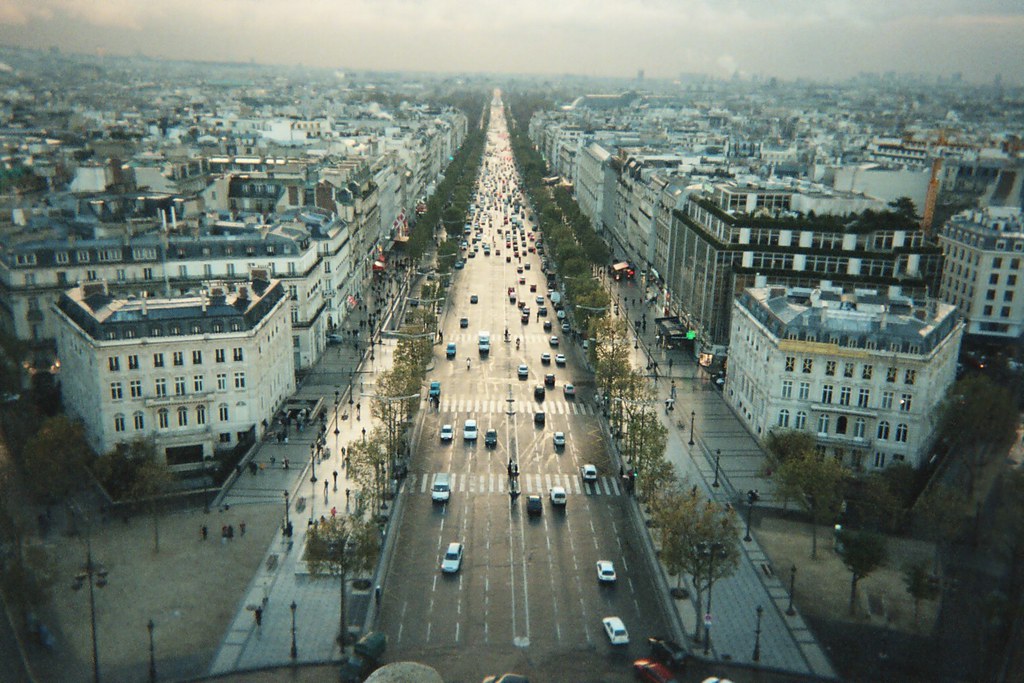
10. **Modern European Integration: Forging a United Future**The mid-20th century witnessed a significant shift in Europe’s global standing. Both World Wars, predominantly fought on European soil, contributed to a decline in Western European dominance, ushering in an era where the Soviet Union and the United States rose to prominence. This period was defined by the ideological competition of the Cold War, which starkly divided Europe along the “Iron Curtain” into two blocs: NATO in the West and the Warsaw Pact in the East. This geopolitical fissure fundamentally altered the continent’s internal dynamics and external relations for decades.
However, the late 20th century brought about a profound transformation. The Revolutions of 1989, the symbolic fall of the Berlin Wall, and the eventual dissolution of the Soviet Union created unprecedented opportunities for reconciliation and deeper European integration. This allowed for the vision of a more unified continent to advance significantly, moving beyond the divisions of the Cold War era.
Institutional efforts toward European integration began as early as 1948 with the founding of the Council of Europe, focused on human rights and rule of law. However, the most profound and far-reaching realization of this integration has come through the European Union (EU). The EU, which now represents the majority of Europe, stands as a unique supranational political entity, operating effectively between a confederation and a federation, founded upon a system of European treaties. Originating in Western Europe, the EU has progressively expanded eastward since the dissolution of the Soviet Union in 1991, embodying a collective endeavor towards stability and prosperity.
The European Union’s influence is extensive, marked by several key features that underscore its integrated nature. A majority of its member states have adopted a common currency, the euro, facilitating trade and economic stability across the bloc. Furthermore, these nations participate in a vast European single market and a customs union, eliminating internal barriers to the free movement of goods, services, capital, and people. A significant achievement is the Schengen Area, where internal border and immigration controls have largely been abolished, allowing for frictionless travel for citizens and residents across participating countries. The EU also holds regular popular elections every five years, which are recognized as the second-largest democratic elections globally after those in India, reflecting its commitment to democratic governance and citizen participation.
Economically, the European Union is a formidable global power. Its economy is ranked as the second-largest in the world by nominal GDP and the third-largest when adjusted for purchasing power parity (PPP). This collective economic strength, combined with its political and social integration, positions the EU as a major player on the world stage, demonstrating the profound impact of modern European integration on global affairs. Through these concerted efforts, Europe continues to navigate its complex history, striving to build a future defined by cooperation, shared values, and collective influence, a testament to its enduring adaptability and vision.
Europe, a continent forged in millennia of geological shifts, cultural innovation, and relentless human endeavor, stands as a living testament to complexity and resilience. From the earliest whispers of hominin life to the grandeur of classical empires, the tumult of migrations, and the strategic pursuit of modern integration, its story is an intricate mosaic of continuity and profound change. Each historical epoch, every shift in its perceived borders, and every step towards greater unity has contributed to the rich, multifaceted identity that defines Europe today. This journey through its past and present reveals a continent not merely defined by geography, but by the continuous evolution of its peoples, cultures, and collective aspirations.” , “_words_section2”: “2104



